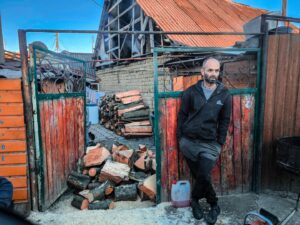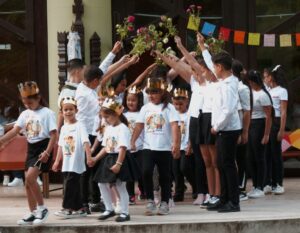The World Day Against Child Labour is held annually on June 12. It is an international day to raise awareness and prompt action to stop child labor in all of its forms.
About 160 million children around the world are engaged in child labor, working in jobs that deprive them of their childhood, interfere with schooling, or harm their mental, physical, or social development. Nearly half of them – 79 million children – work under hazardous conditions. By definition, child labor is a violation of both child protection and rights.
The subsistence economy, unemployment and discrimination have excluded many Roma families. Child labour has been a survival strategy for many of them, an alternative to school failure for others, and deliberate choice when a “promise of success through education” went astray.
Roma working children experience many forms of discrimination and vulnerability inside and outside their communities. Roma working children have a marginal position due to a combination of factors, including ethnicity, age, gender, poverty and at times disability.
Even if education is free, Roma children and parents speak about the cost of clothes, food and transportation costs that they cannot afford. School dropout makes an appearance, causing low educational achievement due to work undertaken and other situations (poverty, family crises, no school nearby, etc.).
Many Roma and majority-population families share the belief that early work shapes character and makes children better prepared for life. What is problematic, though, is that the boundaries between assuming small responsibilities (which is helpful to development) and child labour (which is detrimental) is often vague and not well understood.
Children generally leave with their seasonal worker parents as there is no one left at home to provide care for them. When parents leave for agricultural work, or picking berries and mushrooms, or even planting trees, they bring along their children. This allows for greater family control of the children, but also maximizes their economic gain.
Roma children working in agriculture tend to work for other landowners than their immediate family, just because they don’t have lands. Whereas the majority of population children are more likely to work their own land together with the family, Roma households are poorer so children will need to seek work further. Given this fact the risks of exploitation and abuse are implicitly higher.
Besides seasonal work in agriculture, Roma children (especially boys) work in construction, as daily workers. National legislation forbids work in construction below the age of 16 and this adds to the already existing risks. Working at heights, exposed to agriculture, children can obtain the same amount of money as their parents and during the agricultural season they need to make use of this opportunity. According to Roma children and their families, the main reason why they work is to contribute to family income.
The fact that boys are marrying at an early age (15-17 years) and the family have children at a very early age, they must earn for their new family. Girls are especially vulnerable in these situations. Children’s work goes along with early marriage. Roma girls are „marrying” at the age of 13 to 16 and they are under strong pressure to perform domestic chores for the groom’s family. This is associated with restrictive mobility and controlled social relations, school dropout and functional illiteracy.
The practice of leaving school for different labour tasks is very often found among Roma from rural areas. Roma children may find themselves almost illiterate at the end of four primary years, which increases the likelihood that they will eventually drop out of school. Without an education, they cannot get a job and the vicious cycle of poverty, discrimination and ethnic discrimination continues.
As we mark this World Day Against Child Labour, let’s recommit to creating a world where every child can fulfill their potential.

















